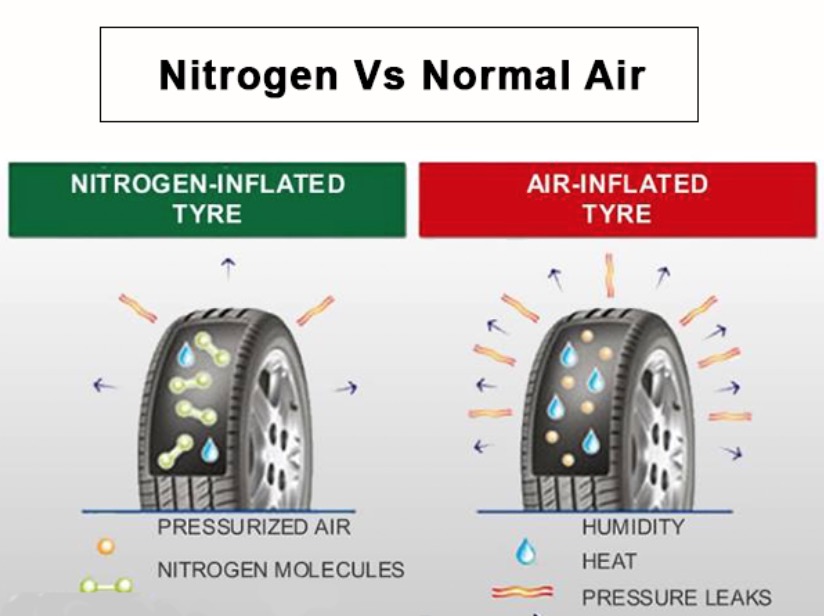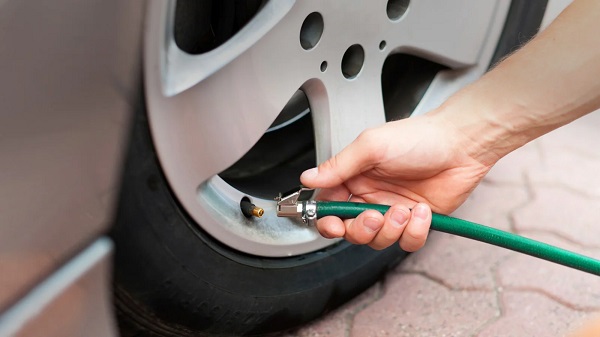TL;DR: Mixing nitrogen and air in tires is feasible, with both having their pros and cons for different driving scenarios. For most everyday drivers, the difference may be minimal, but the choice depends on individual driving needs and cost considerations.Alright, tire enthusiasts and casual car owners alike, let’s dive into the age-old (okay, maybe just a few decades old) debate: regular Joe air or that high-class nitrogen? Pop quiz: did you know our everyday air is about 78% nitrogen? Yep, your tire’s been sipping on nitrogen since day one.
So, when the guys at the tire shop pitch that “100% pure nitrogen fill,” they’re essentially saying, “How about a bit more of what you’ve already got, but fancier?”
Now, the meat of the matter: can you mix ’em? Drumroll… Yes, you absolutely can. No tire fairy will haunt your dreams for playing mixologist. But note: mixing dilutes the “purity.” Sure, you might lose some benefits of 100% nitrogen, like consistent tire pressures. But for most of us mere mortals not vying for NASCAR glory, the difference might be just a blip on the radar.
Bottom line? Mix if you want. Your tires won’t implode. But, whether it’s purity or penny-saving, the choice is yours.
The Science Behind It

Okay, fasten your seat belts – it’s time to take a detour down Science Lane. We’re gonna crack open this nitrogen vs. air debate without inducing a mid-read nap.
First, the nitrogen pitch: Why even bother? Well, it’s not just a shiny sales gimmick. Nitrogen molecules are larger than oxygen, which means they’re less likely to seep through your tire walls. This gives you more consistent tire pressure over time, which in auto-nerd terms, means better gas mileage and more even tire wear (source). Nice, right?
But let’s not forget our atmosphere, which has been doing the tire gig since forever. Regular air has moisture (that pesky water vapor), and when it’s inside your tire, it can cause pressure fluctuations with temperature changes. Nitrogen, being drier, minimizes this issue.
Now, when you get all mad-scientist and mix the two, you’re blending the benefits (and the downsides) of both. You’ll still get some improved consistency from the nitrogen, but also some pressure shifts from the air. It’s like mixing regular coffee with decaf: you still get a kick, but it might not be as jolting.
Still with me? Good. Remember, this isn’t rocket science (or maybe it is?), but the choice between pure nitrogen, regular air, or a bubbly mix of the two boils down to your driving needs and just how much science you want in your tires.
Real Life Uses: Does It Make a Difference?

Let’s shift gears and head out of the lab and onto the open road, where rubber truly meets the road (pun absolutely intended).
Picture this: You’ve just splurged on a nitrogen fill, and you’re cruising down the highway. It feels… pretty much the same, right? That’s because, for many everyday drivers, the difference between nitrogen and air in their tires is subtle – like choosing between two nearly identical shades of blue for your bedroom walls.
Now, consider Tom, your neighbor who fancies himself a weekend track warrior. He swears by nitrogen because when he’s doing laps, those few degrees of temperature stability can be the difference between a new personal best and burning rubber in the pit.
But here’s a fun twist. Take Jane, a cross-country road tripper. She once started with pure nitrogen, had to top up with air in a small town in Nebraska, then added more nitrogen in California. A cocktail of tire fillings, if you will. Did her journey implode? Nope. She still enjoyed her sing-alongs and had a smooth ride with those mixed tires.
In essence, your real-world experience with nitrogen vs. air depends on how and where you drive. Daily commuter? You might not notice much difference. Race enthusiast or cross-country explorer? Your mileage may vary – literally and figuratively. Either way, keep those tires checked, and happy motoring!
Cost: Is Nitrogen Worth the Price?
Alright, let’s tread into the territory most of us secretly care about most: the cash. Because while we might love the hum of an engine or the thrill of the open road, nobody’s a fan of that sinking feeling when your wallet gets lighter.
Enter nitrogen, the luxury condo of tire fills. It sounds fancy, and with some places charging a premium, it can feel like you’re buying into an exclusive club. But what are you really getting for your hard-earned cash?
The proponents will sing praises: longer tire life, improved fuel efficiency, and less frequent top-ups. And, sure, if you’re shaving seconds off your track time or if you’re managing a fleet of trucks, those benefits might translate to real savings.
However, for the average Joe or Jane commuting to work, making weekend trips to the grocery store, or picking up the kids, will you truly see those dollar signs in savings? Maybe. But it could be more in the realm of finding spare change under your sofa cushions rather than hitting the jackpot.
Let’s be clear: it’s not that nitrogen doesn’t have its merits. But, like a gourmet cup of coffee, you need to decide if the benefits justify the cost. And if you’re just looking for a reliable brew (or in this case, tire pressure) without the frills, good old air might do the trick – and keep a few more bucks in your pocket.
Mixing the Two: Good or Bad Idea?
Alright, folks, it’s crunch time. We’ve talked science, real-world drives, and even taken a peek at our wallets. Now, let’s tackle the biggie: to mix or not to mix?
Imagine you’re at a soda fountain. You’ve got cola on one side, and that clear bubbly stuff (let’s call it ‘NitroPop’) on the other. Pure cola’s sweet and familiar. ‘NitroPop’? Crisp and consistent. But some days, you might fancy a combo – a cocktail of sweet and crisp. That’s your tire quandary, in a carbonated nutshell.
When you decide to play bartender with your tires, blending air and nitrogen, you’re not committing a cardinal car sin. You’re not going to wake up to four flat tires or an angry car gnome shaking its fist. But, what you are doing is diluting some of those pure nitrogen perks. It’s a compromise, much like our soda blend.
Does that mean it’s a bad choice? Not at all. For many, it’s the practical choice. Maybe you started with nitrogen, but now you’re miles from a nitrogen fill station, and your tire’s feeling deflated. Air’s everywhere, and it’ll do just fine in a pinch.
So, in the grand world of tire dilemmas, mixing is a bit like wearing stripes with plaid. Some purists might gasp, but if it gets you where you need to go and feels right for your ride? Mix away, my friend. After all, driving is about the journey, not what’s in your tires.
Final Thoughts: What Should You Choose?
Alright, speedsters and Sunday drivers, as we steer to the end of this tire tale, here’s my two cents. Tires, whether pumped with air, nitrogen, or a bubbly combo, are a bit like pizza. Even when they’re not perfect, they’re still pretty darn good.
Nitrogen has its bragging rights – and for the racetrack aficionados or those ultra-precise drivers, it’s a worthy sidekick. But for the majority of us, zipping around town, tackling errands, or embarking on the occasional road trip, standard air won’t steer you wrong.
The verdict? It’s less about what’s inside your tire and more about how you drive. Check those pressures, rotate when needed, and treat them right. Whether you’re team air, team nitrogen, or somewhere in the mix, remember: it’s the journey, the music blasting, and the open road ahead that truly matters. Drive on!